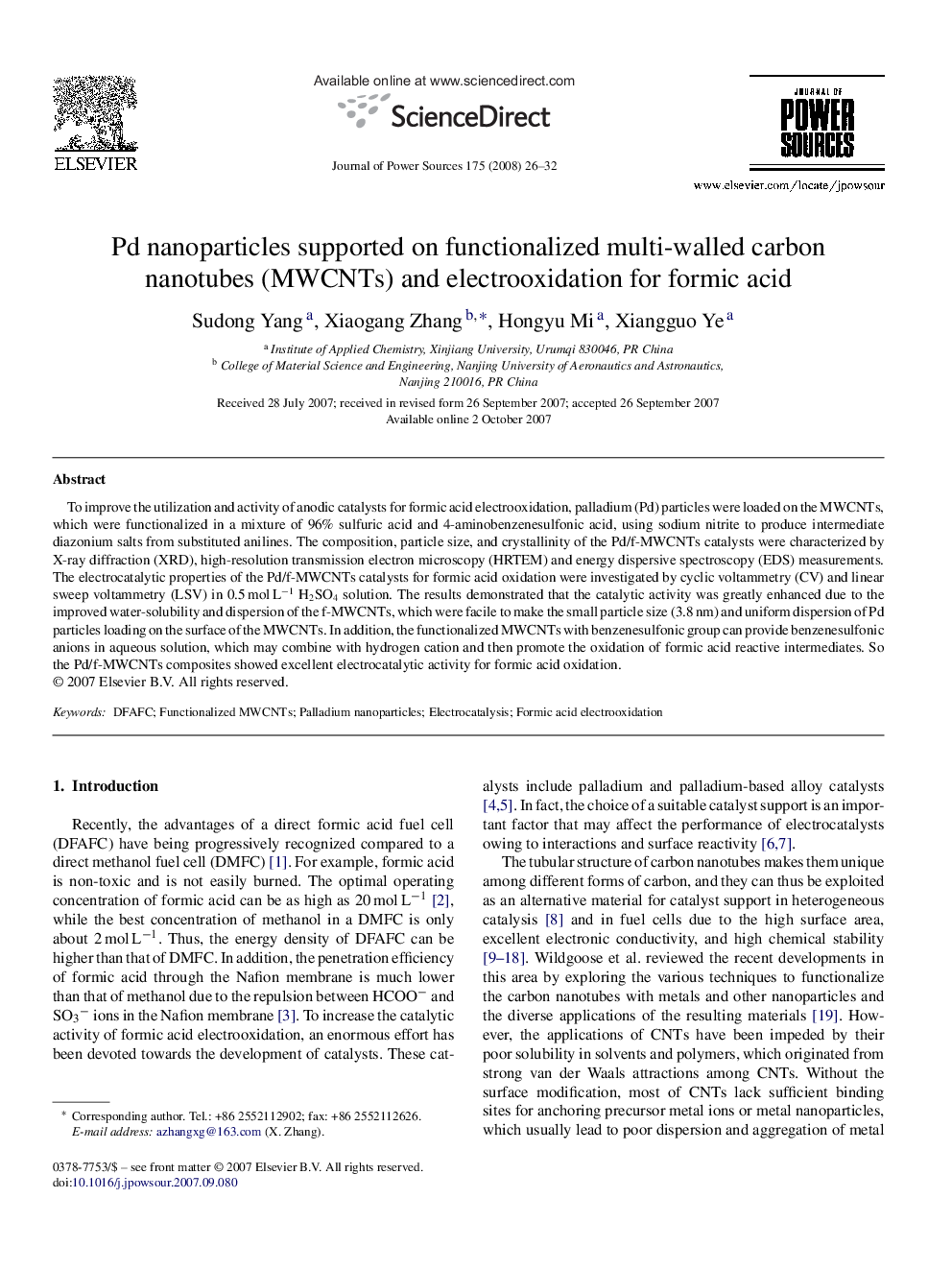| Article ID | Journal | Published Year | Pages | File Type |
|---|---|---|---|---|
| 1294747 | Journal of Power Sources | 2008 | 7 Pages |
To improve the utilization and activity of anodic catalysts for formic acid electrooxidation, palladium (Pd) particles were loaded on the MWCNTs, which were functionalized in a mixture of 96% sulfuric acid and 4-aminobenzenesulfonic acid, using sodium nitrite to produce intermediate diazonium salts from substituted anilines. The composition, particle size, and crystallinity of the Pd/f-MWCNTs catalysts were characterized by X-ray diffraction (XRD), high-resolution transmission electron microscopy (HRTEM) and energy dispersive spectroscopy (EDS) measurements. The electrocatalytic properties of the Pd/f-MWCNTs catalysts for formic acid oxidation were investigated by cyclic voltammetry (CV) and linear sweep voltammetry (LSV) in 0.5 mol L−1 H2SO4 solution. The results demonstrated that the catalytic activity was greatly enhanced due to the improved water-solubility and dispersion of the f-MWCNTs, which were facile to make the small particle size (3.8 nm) and uniform dispersion of Pd particles loading on the surface of the MWCNTs. In addition, the functionalized MWCNTs with benzenesulfonic group can provide benzenesulfonic anions in aqueous solution, which may combine with hydrogen cation and then promote the oxidation of formic acid reactive intermediates. So the Pd/f-MWCNTs composites showed excellent electrocatalytic activity for formic acid oxidation.
